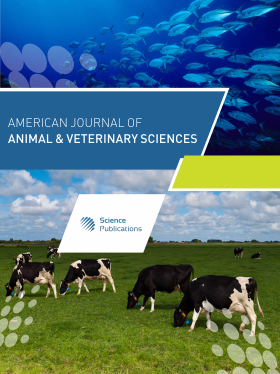Neosporosis in Sheep and Different Breeds of Goats from Southern Jordan: Prevalence and Risk Factors Analysis
- 1 Jordan University of Science and Technology, Jordan
- 2 National Center for Agricultural Research and Extension, Jordan
Abstract
A cross sectional study was performed to investigate the epidemiology of Neospora caninum infection in Southern Jordan. A total of 320 sheep and 300 goats from 38 and 24, sheep and goat flocks, respectively, were randomly sampled and assayed for presence of antibodies against N. caninum. A structured pre-tested questionnaire was administered to collect information on flocks' health and management. A multivariable logistic regression model was constructed to investigate risk factors associated with seropositivity to N. caninum. The individual true seroprevalence of N. caninum in sheep and goats was 4.3 and 5.7%, respectively. The sheep and goat flock level true seroprevalence for N. caninum was 45.8 and 48.7%, respectively. The logistic regression model revealed small herd size, having more than one dog and grazing in communal pastures as risk factors for N. caninum seropositivity in both sheep and goats. Damascus breed goats were more likely to be seropositive than goats of other breeds.
DOI: https://doi.org/10.3844/ajavsp.2008.47.52

- 6,432 Views
- 5,758 Downloads
- 48 Citations
Download
Keywords
- Neospora caninum
- seroprevalence
- sheep
- goats
- risk factors
